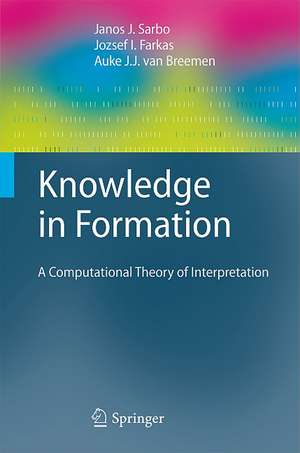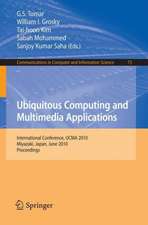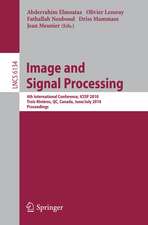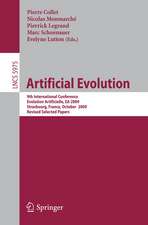Knowledge in Formation: A Computational Theory of Interpretation: Cognitive Technologies
Autor Janos J. Sarbo, Jozsef I. Farkas, Auke J.J. van Breemenen Limba Engleză Hardback – 17 iun 2011
The book consists of three parts. The first part focuses on the properties of signs and sign interpretation; in the second part the authors introduce a model that complies with the conditions for sign processing set by the first part; and in the third part they examine applications of their model in the domain of logic, natural language, reasoning and mathematics. Finally they show how these domains pop up as perspectives in an overall model of knowledge representation.
The reader is assumed to have some interest in human information processing and knowledge modeling. Natural language is considered in the obvious sense, familiarity with linguistic theories is not required. Sign theoretical concepts are restricted to a manageable subset, which is introduced gently. Finally, some familiarity with basic concepts of propositional and syllogistic logic may be useful.
| Toate formatele și edițiile | Preț | Express |
|---|---|---|
| Paperback (1) | 589.66 lei 38-45 zile | |
| Springer Berlin, Heidelberg – 3 aug 2013 | 589.66 lei 38-45 zile | |
| Hardback (1) | 647.61 lei 6-8 săpt. | |
| Springer Berlin, Heidelberg – 17 iun 2011 | 647.61 lei 6-8 săpt. |
Din seria Cognitive Technologies
- 20%
 Preț: 350.99 lei
Preț: 350.99 lei - 15%
 Preț: 649.71 lei
Preț: 649.71 lei - 20%
 Preț: 336.21 lei
Preț: 336.21 lei - 15%
 Preț: 635.47 lei
Preț: 635.47 lei - 20%
 Preț: 650.73 lei
Preț: 650.73 lei - 20%
 Preț: 644.15 lei
Preț: 644.15 lei - 20%
 Preț: 886.16 lei
Preț: 886.16 lei - 20%
 Preț: 331.91 lei
Preț: 331.91 lei -
 Preț: 390.63 lei
Preț: 390.63 lei - 20%
 Preț: 337.13 lei
Preț: 337.13 lei - 20%
 Preț: 1458.56 lei
Preț: 1458.56 lei - 20%
 Preț: 646.80 lei
Preț: 646.80 lei - 20%
 Preț: 994.08 lei
Preț: 994.08 lei - 20%
 Preț: 649.09 lei
Preț: 649.09 lei -
 Preț: 397.38 lei
Preț: 397.38 lei - 20%
 Preț: 988.00 lei
Preț: 988.00 lei - 20%
 Preț: 1009.61 lei
Preț: 1009.61 lei - 20%
 Preț: 597.18 lei
Preț: 597.18 lei - 20%
 Preț: 614.19 lei
Preț: 614.19 lei - 20%
 Preț: 675.51 lei
Preț: 675.51 lei - 20%
 Preț: 994.40 lei
Preț: 994.40 lei - 20%
 Preț: 891.89 lei
Preț: 891.89 lei - 20%
 Preț: 600.41 lei
Preț: 600.41 lei - 20%
 Preț: 533.76 lei
Preț: 533.76 lei - 20%
 Preț: 645.14 lei
Preț: 645.14 lei - 20%
 Preț: 512.39 lei
Preț: 512.39 lei - 20%
 Preț: 338.68 lei
Preț: 338.68 lei - 20%
 Preț: 345.22 lei
Preț: 345.22 lei - 20%
 Preț: 668.55 lei
Preț: 668.55 lei -
 Preț: 365.21 lei
Preț: 365.21 lei - 20%
 Preț: 640.51 lei
Preț: 640.51 lei - 20%
 Preț: 1297.17 lei
Preț: 1297.17 lei
Preț: 647.61 lei
Preț vechi: 809.51 lei
-20% Nou
Puncte Express: 971
Preț estimativ în valută:
123.92€ • 132.51$ • 103.32£
123.92€ • 132.51$ • 103.32£
Carte tipărită la comandă
Livrare economică 18 aprilie-02 mai
Preluare comenzi: 021 569.72.76
Specificații
ISBN-13: 9783642170881
ISBN-10: 3642170889
Pagini: 220
Ilustrații: XII, 217 p.
Dimensiuni: 155 x 235 x 20 mm
Greutate: 0.48 kg
Ediția:2011
Editura: Springer Berlin, Heidelberg
Colecția Springer
Seria Cognitive Technologies
Locul publicării:Berlin, Heidelberg, Germany
ISBN-10: 3642170889
Pagini: 220
Ilustrații: XII, 217 p.
Dimensiuni: 155 x 235 x 20 mm
Greutate: 0.48 kg
Ediția:2011
Editura: Springer Berlin, Heidelberg
Colecția Springer
Seria Cognitive Technologies
Locul publicării:Berlin, Heidelberg, Germany
Public țintă
ResearchCuprins
Signs and Sign Interpretation.- From Signs to Interpretants.- A Semiotic Account of Interpretation Processes.- A World of Signs.- Perception and Cognition.- Language Signs.- Reasoning Signs.
Recenzii
From the reviews:
“The book introduces a new model of knowledge representation that respects the properties of human information processing as well as the properties of signs. … The book chapters are interpreted as events in a process that aims to conceptualize knowledge representation as a phenomnenon. The theory in the book is accompanied by a lot of relevant examples. Each chapter is finished by a short summary of related research. … The book can be recommended to anybody interested in human information processing and knowledge modelling.” (Jaroslav Pokorný, Zentralblatt MATH, Vol. 1244, 2012)
“The book introduces a new model of knowledge representation that respects the properties of human information processing as well as the properties of signs. … The book chapters are interpreted as events in a process that aims to conceptualize knowledge representation as a phenomnenon. The theory in the book is accompanied by a lot of relevant examples. Each chapter is finished by a short summary of related research. … The book can be recommended to anybody interested in human information processing and knowledge modelling.” (Jaroslav Pokorný, Zentralblatt MATH, Vol. 1244, 2012)
Notă biografică
The authors developed their approach based on their experience teaching the related theory at Radboud University, and their multidisciplinary interactions with research teams in the areas of knowledge representation, philosophy, artificial intelligence, natural language and logic.
Textul de pe ultima copertă
Humans have an extraordinary capability to combine different types of information in a single meaningful interpretation. The quickness with which interpretation processes evolve suggests the existence of a uniform procedure for all domains. In this book the authors suggest that such a procedure can be found. They concentrate on the introduction of a theory of interpretation, and they define a model that enables a meaningful representation of knowledge, based on a dynamic view of information and a cognitive model of human information processing.
The book consists of three parts. The first part focuses on the properties of signs and sign interpretation; in the second part the authors introduce a model that complies with the conditions for sign processing set by the first part; and in the third part they examine applications of their model in the domain of logic, natural language, reasoning and mathematics. Finally they show how these domains pop up as perspectives in an overall model of knowledge representation.
The reader is assumed to have some interest in human information processing and knowledge modeling. Natural language is considered in the obvious sense, familiarity with linguistic theories is not required. Sign theoretical concepts are restricted to a manageable subset, which is introduced gently. Finally, some familiarity with basic concepts of propositional and syllogistic logic may be useful.
The book consists of three parts. The first part focuses on the properties of signs and sign interpretation; in the second part the authors introduce a model that complies with the conditions for sign processing set by the first part; and in the third part they examine applications of their model in the domain of logic, natural language, reasoning and mathematics. Finally they show how these domains pop up as perspectives in an overall model of knowledge representation.
The reader is assumed to have some interest in human information processing and knowledge modeling. Natural language is considered in the obvious sense, familiarity with linguistic theories is not required. Sign theoretical concepts are restricted to a manageable subset, which is introduced gently. Finally, some familiarity with basic concepts of propositional and syllogistic logic may be useful.
Caracteristici
Book introduces many original ideas Significant contribution to the field The first attempt to establish a rigorous Peircean approach to knowledge representation Includes supplementary material: sn.pub/extras

















